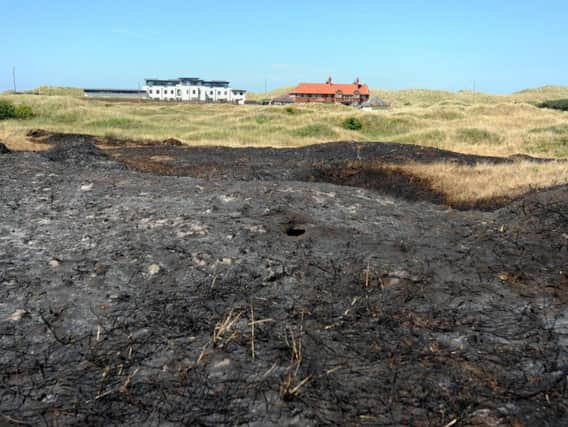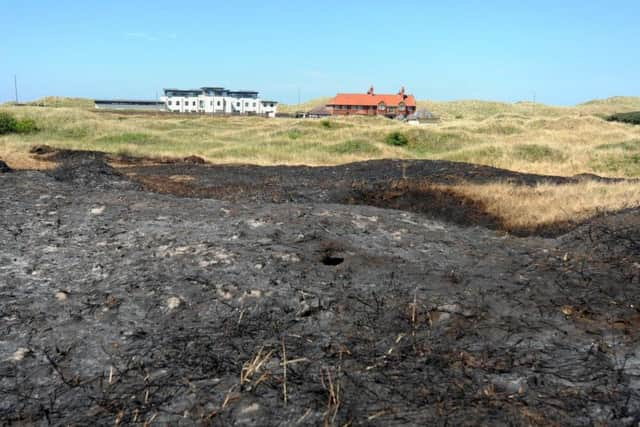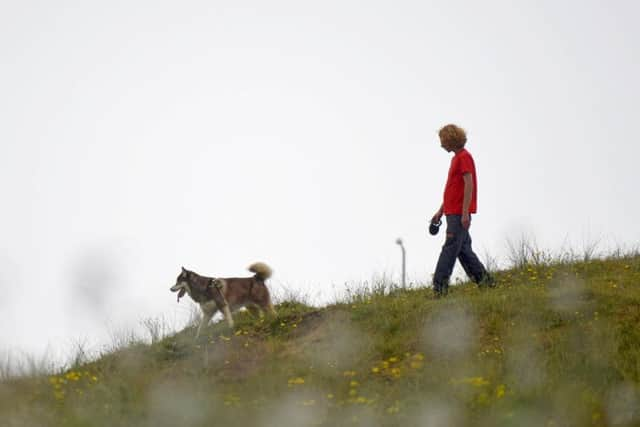Why the impact of last year's sand dunes fire in St Annes will be felt for years to come


Tomorrow marks one year since the blaze on the sand dunes at St Annes, which prompted an emergency temporary ban on portable barbecues.
These images clearly show how the site is starting to get back to normal after being left charred and blackened by the fire on June 30 last year.
Advertisement
Hide AdAdvertisement
Hide Ad

The cause of the dunes fire was never ascertained but it came at a time of particularly high temperatures and just hours after a smaller fire caused by a disposable barbecue scarred a section of Lytham Green, leading to the initial short-term ban.
The blaze last year saw five fire crews battle for six hours to get it under control.
Plant life was ravaged and despite the transformation of the site in the last 12 months, wildlife officers reckon it could take up to 15 years for some parts to be fully restored.
Andrew Mills, Fylde Council’s sand dunes project area conservation ranger, said of the dunes fire: “I would say about 70 per cent of the burned areas are now covered in vegetation, however the dune grasses seem to have struggled in areas.
Advertisement
Hide AdAdvertisement
Hide Ad

“We are also monitoring bird and butterfly numbers on the reserve so by the end of summer we should have a good idea about how they have been affected.
“Overall, we expect the recovery to take between 10 and 15 years, to have the full mosaic of plants back, if that is possible.
“The recovery is also highly dependent on weather. This year we have been lucky enough to have a wet spring and early summer and this seems to have helped.”
In addition to the two fires a year ago, the council has received a number of complaints about damage caused by barbecues on public land.
Advertisement
Hide AdAdvertisement
Hide AdIt led to the public spaces protection orders being drafted to give officers greater powers to tackle the problem than the temporary ban had allowed for.
Coun Cheryl Little, chairman of the tourism and leisure committee, said: “We want residents and visitors to use parks, open spaces and beaches responsibly and safely.
“The council has considered this matter carefully taking into account all views submitted and on balance has decided to introduce this restriction.
“We hope that visitors and residents will understand why we have had to take this action, and will enjoy a simple picnic while visiting.”
Advertisement
Hide AdAdvertisement
Hide AdMeanwhile, Lancashire Fire and Rescue has renewed its advice on key steps the public can take to prevent wild fires.
A spokesman said: “Ensure cigarettes are discarded properly and fully extinguished; don’t light barbecues or campfires on moors or besides vehicles; ensure you take any litter home with you as glass bottles and broken glass can magnify in the sun and start a fire; and talk to young people about the dangers of lighting fires.
“Lancashire Fire and Rescue Service has the skills and knowledge to extinguish a wildfire should one start but ultimately want the people who maliciously set grass and moorland on fire to realise that while crew and resources are being deployed to remote parts of Lancashire to extinguish the fires, the perpetrators themselves or their family back home in towns could be in danger. Deliberate fires can cost lives.”